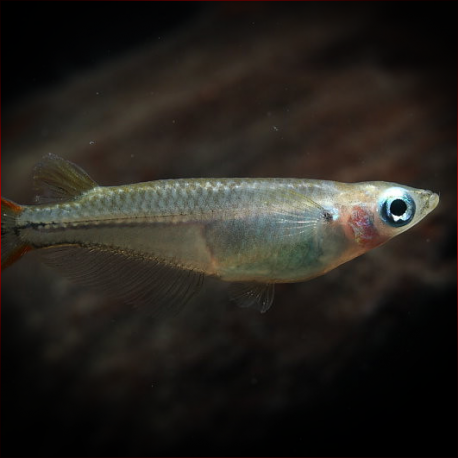More info
Datasheet
| Minimum Tank Size | 25 litres / 6.60 US gallons |
| Maximum Size | 2.1cm / 0.83inches |
| Temperature | 23°C / 73.40°F - 27°C / 80.60°F |
| Hardness | 2.02dgH / 36ppm - 15.02dgH / 268ppm |
| pH | 6.0-7.5 |
Behaviour
The Mekong Ricefish is generally peaceful but may not be the best fit for all community tank setups due to its small size. It thrives when housed with diminutive species like Boraras, Trigonostigma, Danionella, and some Danio spp., as well as freshwater shrimp from the Caridina and Neocaridina genera. This species can also coexist well with smaller anabantoids such as Sphaerichthys, Parosphromenus, or smaller Betta species. If breeding is the intention, it is best kept alone to avoid hybridization risks. Mekong Ricefish is typically non-aggressive towards its own kind and tends to exhibit more vibrant colors and confident behavior when maintained in groups of eight or more.
Aquarium Setup
To set up an ideal environment for the Mekong Ricefish, a heavily planted tank with a dark substrate, dense vegetation patches, and some open areas is recommended. Adding twisted roots, bogwood pieces, and surface vegetation enhances the aquarium for these fish, encouraging them to display their best colors. Plant-rich tanks provide a favorable setting for fry survival alongside adult fish. Water conditions should be within a pH range of 6.0-7.5, a hardness of 36-268ppm, and a temperature between 23-27°C (see table).
Feeding and Diet
As micropredators, Mekong Ricefish feed on small insects, worms, crustaceans, and zooplankton in their natural habitat. In the aquarium, they readily accept small-sized dried foods but should be offered daily meals of live and frozen food such as Daphnia, Artemia, chopped bloodworms, along with quality flakes and granules suitable for their size.
Reproduction & Dimorphism
Breeding the Mekong Ricefish is relatively easy, with females capable of producing batches of eggs regularly. Spawning usually occurs in the early morning when males darken in color and defend small territories. Females release adhesive eggs that are fertilized outside their bodies and then deposited among vegetation. The incubation period is typically 1-3 weeks, and precautions should be taken regarding predation by adults on the fry. Male ricefish are slimmer and exhibit bright, reddish-orange bands on their caudal fins, which are less prominent in females.
Habitat and Distribution
Endemic to the Mekong River system, the Mekong Ricefish is found in various tributary drainages in northeastern Thailand, Laos, and Cambodia. Its habitat primarily includes freshwater environments like canals, ditches, and ponds with dense aquatic plant growth. The species is often collected from clear water swamps, potentially with acidic water conditions.

